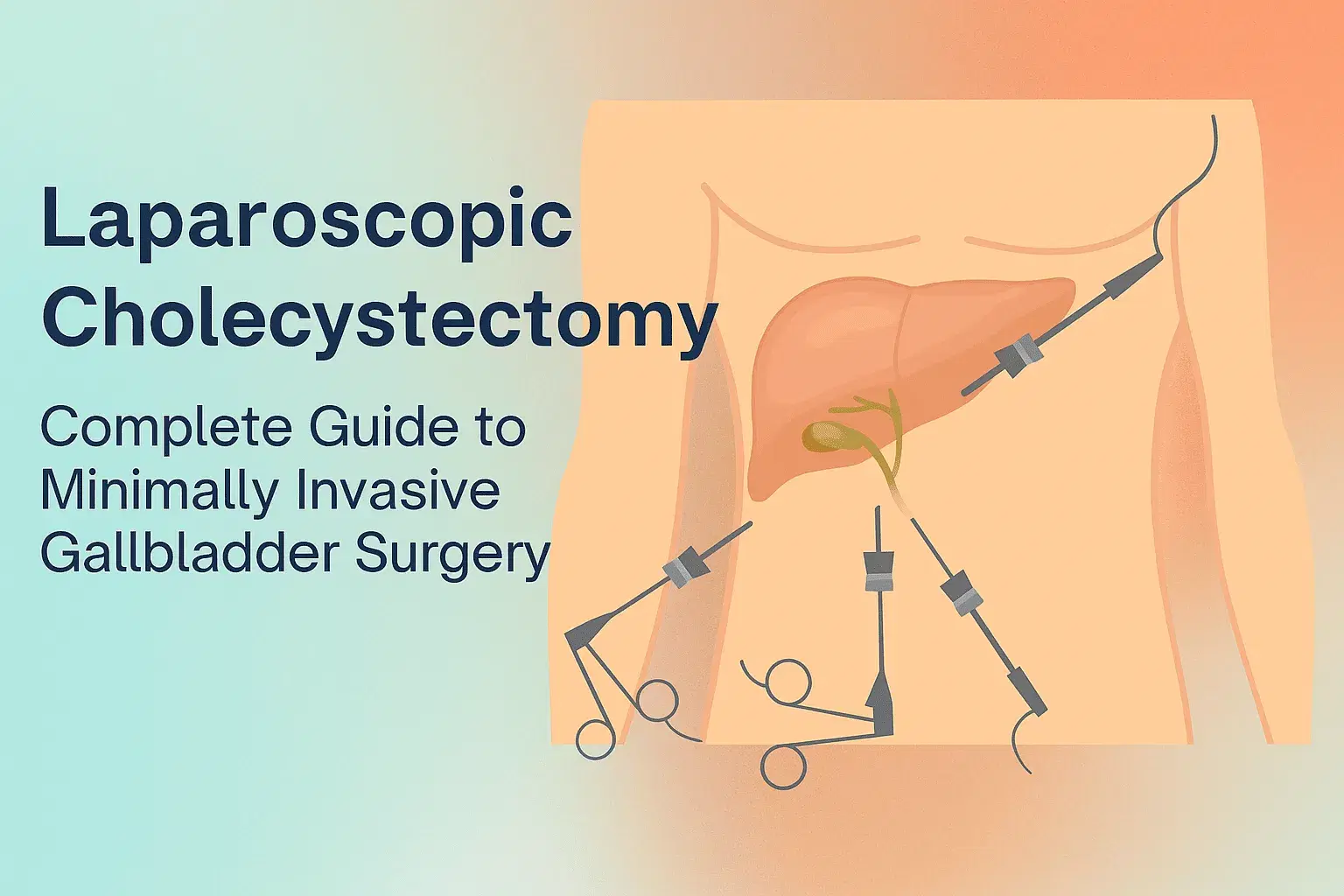
Laparoscopic Cholecystectomy: Complete Guide to Minimally Invasive Gallbladder Surgery
Our gallbladder may be small, but when it misbehaves, it can cause a lot of discomfort. This tiny organ stores bile, which helps digest fats. But problems like gallstones and cholecystitis (inflammation of the gallbladder) can lead to severe pain, bloating, nausea, and even fever.
Thankfully, modern medicine offers an effective solution: laparoscopic cholecystectomy—a minimally invasive gallbladder surgery that has become the gold standard for treating such conditions. This advanced surgical technique is widely used and has helped countless patients in India and across the globe recover swiftly and safely.
What Is Laparoscopic Cholecystectomy?
Laparoscopic cholecystectomy is a surgical procedure to remove the gallbladder using small incisions, a camera (laparoscope), and specialized tools. This method is often referred to as keyhole gallbladder surgery because it avoids large cuts.
Unlike traditional open gallbladder removal surgery, which requires a larger abdominal incision, the laparoscopic approach uses 3–4 tiny incisions, typically 0.5–1 cm each. A camera guides the surgeon, who removes the gallbladder with precision.
Common Reasons for the Surgery
- Gallstones surgery: To treat stones that block bile flow or cause repeated pain
- Cholecystitis treatment: For inflammation or infection of the gallbladder
- Gallbladder polyps or gallbladder dysfunction
This technique is often preferred due to its reduced recovery time, fewer complications, and minimal scarring.
Who Is a Candidate for Laparoscopic Cholecystectomy?
Most patients with gallbladder-related problems are good candidates. You might be eligible for this minimally invasive gallbladder surgery if you:
- Experience frequent gallstone attacks or gallstone-related complications
- Have had recurrent or chronic cholecystitis
- Have gallbladder polyps or abnormal functioning confirmed by imaging
When Alternative Treatments Might Be Considered
In rare cases—such as patients with severe scarring from previous surgeries, bleeding disorders, or uncontrolled infections—open surgery may be advised. But for the majority, laparoscopic cholecystectomy is both safe and effective.
Benefits of Laparoscopic Cholecystectomy
Choosing laparoscopic cholecystectomy over open surgery has many advantages:
- Minimally invasive: Tiny cuts mean less tissue damage
- Reduced pain: Patients often report lower postoperative pain levels
- Faster recovery: Most return to work or normal activities in 1–2 weeks
- Lower risk of infection or hernia compared to open procedures
- Shorter hospital stay: Some patients go home the same day
In India, where patients often want a quick return to daily routines—be it cooking for the family or managing work—this option fits perfectly.
Laparoscopic vs. Open Cholecystectomy
Q: How does laparoscopic cholecystectomy compare to open cholecystectomy?

Open surgery might still be used in emergencies or when laparoscopic access is difficult due to anatomy or severe inflammation. However, at specialized centers like Bangalore Gastro Centre, the laparoscopic method is preferred whenever safely possible.
Preparing for the Surgery
To ensure the best results from gallbladder removal surgery, you may be asked to:
- Undergo blood tests, ultrasound, or other imaging scans
- Stop certain medications (like blood thinners) days before surgery
- Avoid food and water for at least 6–8 hours before the procedure
On the day of surgery, wear loose, comfortable clothing and bring your necessary documents. The procedure usually takes 1–2 hours, followed by a few hours of observation in recovery.
What to Expect After the Surgery
Q: What is the recovery process like after laparoscopic cholecystectomy?
Recovery is typically smooth:
Day 1–2:
- You may feel mild discomfort or bloating
- Resume walking and light activity within 24 hours
Week 1:
- You'll likely be able to eat a normal diet—start with soft foods and progress as tolerated
- Avoid lifting heavy objects
Week 2:
- Many return to work, especially desk jobs
Postoperative Care Includes:
- Keeping incision sites clean and dry
- Watching for signs of infection (redness, swelling, discharge)
- Following prescribed medications for pain or digestion
For tips on managing digestive health concerns after gallbladder removal, check out our related blog: How Gallbladder Removal Affects Digestion: Insights from Gastroenterology Experts
When to Call a Doctor Post-Surgery
While most people recover uneventfully, contact your surgeon immediately if you experience:
- Fever over 100.4°F (38°C)
- Severe or worsening abdominal pain
- Persistent vomiting
- Yellowing of eyes or skin (jaundice)
- Pus or foul-smelling discharge from the incision
Regular follow-ups are also essential to monitor healing and address any dietary or digestion-related issues.
Way Forward
Laparoscopic cholecystectomy is a safe, effective, and widely used technique for treating gallbladder conditions like gallstones and cholecystitis. With its minimally invasive approach, patients benefit from less pain, quicker recovery, and fewer complications.
If you or a loved one is considering gallbladder removal surgery, consult a qualified surgeon to determine the best course of treatment. Centers like Bangalore Gastro Centre are equipped with the expertise and technology to ensure optimal outcomes.
Whether you're managing gallstone attacks or dealing with chronic inflammation, knowing your options can help you make informed decisions for a healthier future.
